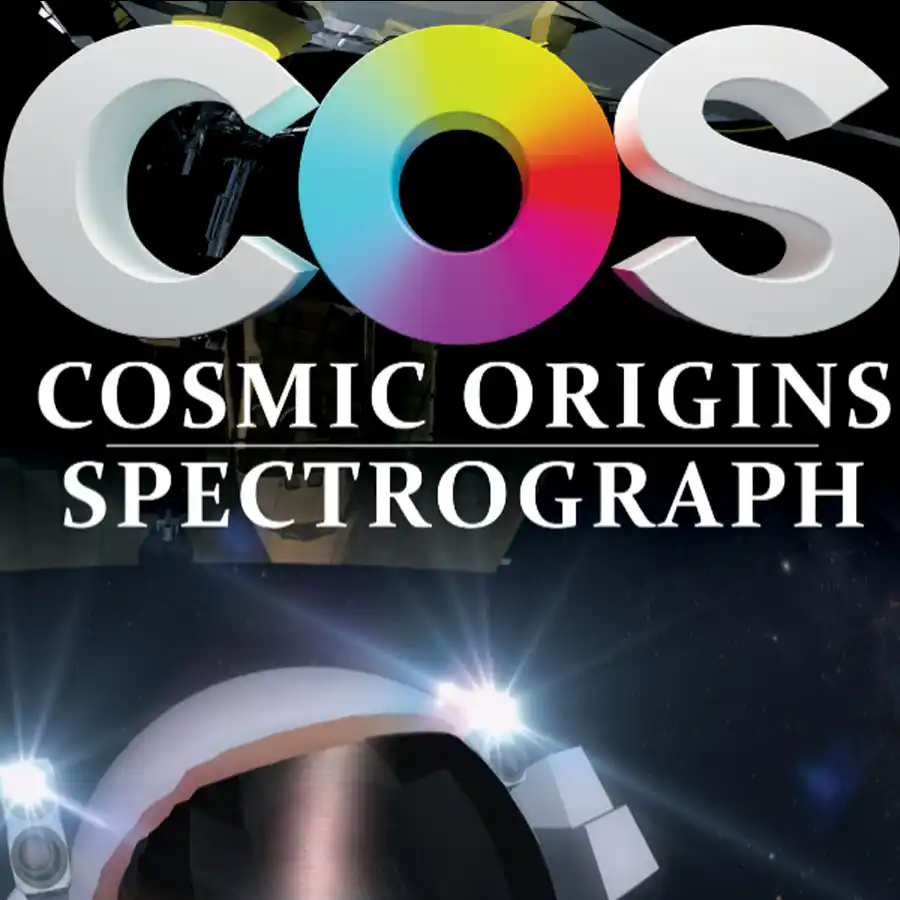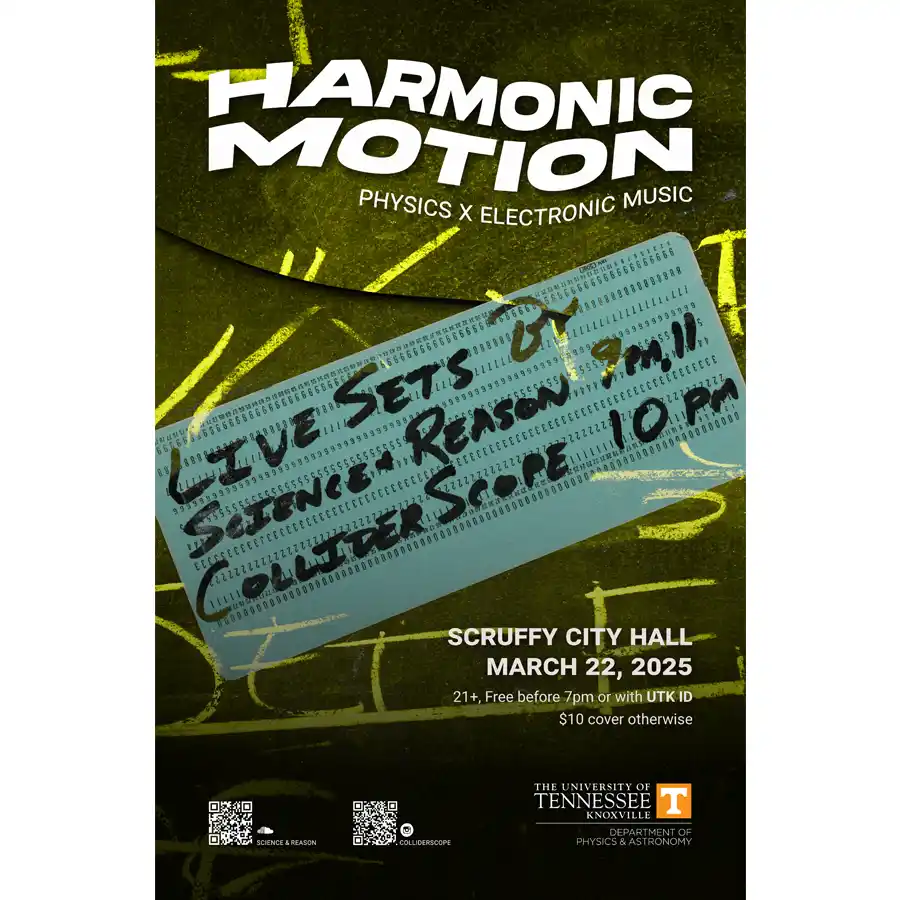signal:noise

Let’s kick off summer with some physics and electronic music! Your Harmonic Motion favorites are back with a new show!
What: signal:noise
Science & Reason (DJ Set) + ColliderScope (Physics VJ Set)
Who: Science & Reason + ColliderScope
Science & Reason = a mix of techno, dance, and house music (Bains Professor Steve Johnston)
ColliderScope = audio waveform-created images from CERN + sound waves across oscilloscope screens (Assistant Professor Larry Lee)
Where: Fly by Night, 906 Sevier Ave., Suite 126, Knoxville TN 37920
When: 24 May 2025 @ 9 PM, (21+, $5)































